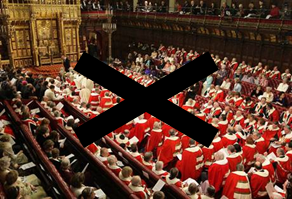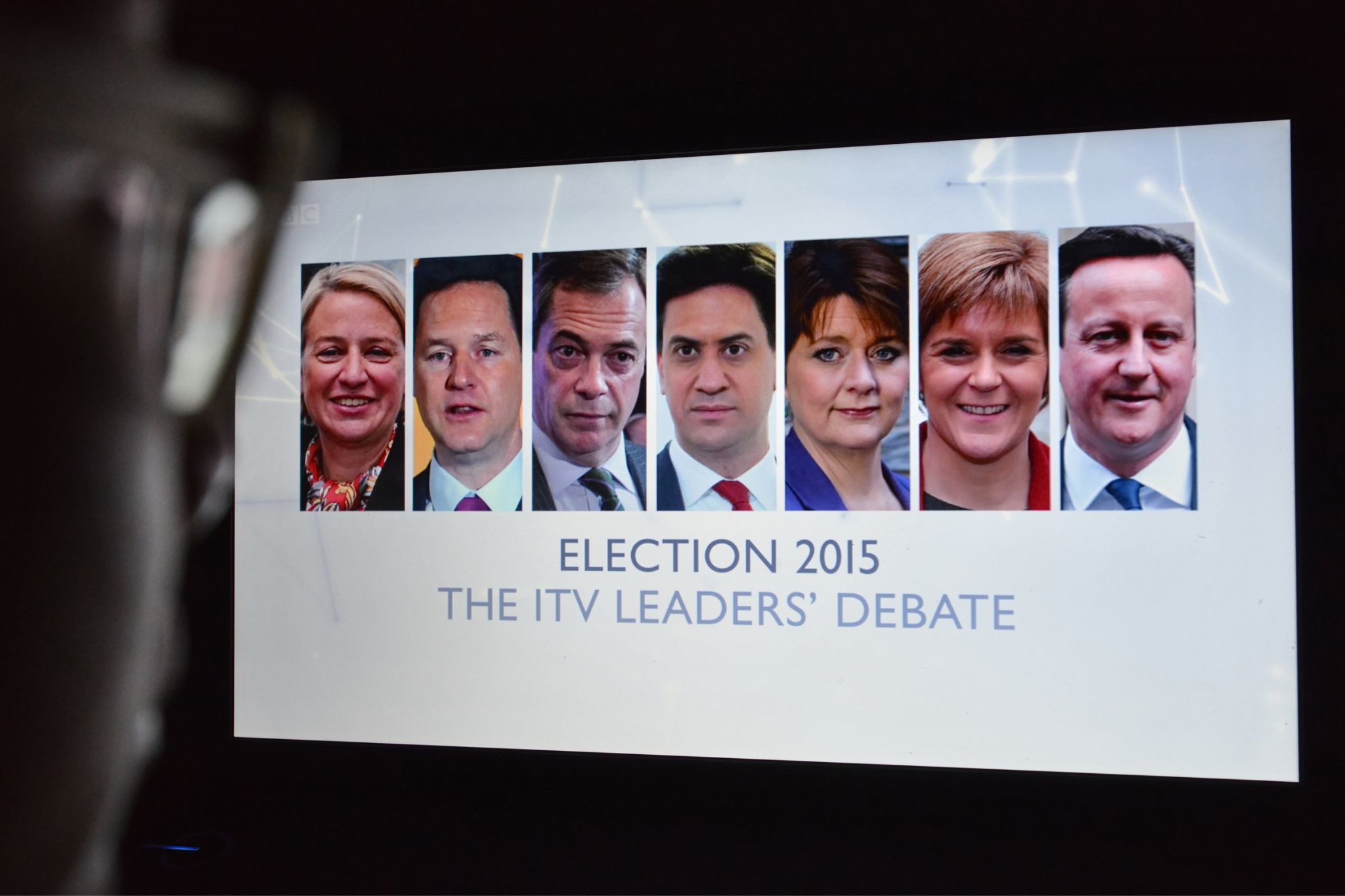 The House of Lords is reputed as an antiquated chamber of old white men wearing strange robes. Meg Russell dispels common misconceptions, showing how the Lords is quite diverse relative to the Commons and better reflects the country’s vote distribution. It is also politically assertive, thanks to the 1999 reform that removed hereditary members, and no longer conservative in nature. Nevertheless, the Lords is far from perfect and in need of further reform.
The House of Lords is reputed as an antiquated chamber of old white men wearing strange robes. Meg Russell dispels common misconceptions, showing how the Lords is quite diverse relative to the Commons and better reflects the country’s vote distribution. It is also politically assertive, thanks to the 1999 reform that removed hereditary members, and no longer conservative in nature. Nevertheless, the Lords is far from perfect and in need of further reform.
The image of the House of Lords is very familiar to us in Britain, and to millions overseas. Our second chamber has existed for centuries (and is indeed the oldest such institution in the world), so it’s easy to assume that it is the ‘same as it ever was’. But in a book published this week with Oxford University Press I argue that the Lords deserves far closer attention. Particularly since the reform by Labour in 1999 which removed most of its hereditary members, the chamber has changed fundamentally. These changes affect who sits there, how they perceive their role, and the impact that they have on policy. Indeed it is no longer possible to fully understand the dynamics of British politics without understanding the Lords.
One reason that few stop to examine the chamber is because it’s constantly viewed as being on the brink of reform. But the current coalition’s reform plans failed in 2012 – like so many others before them – and large-scale changes are now off the agenda, at least for a while. That makes it important to examine more carefully the second chamber that we have actually got.

The ermine-clad media image of the Lords is misleading, and significantly out of date. It’s hard to find a newspaper story about the chamber that isn’t accompanied by a picture of a gathering of elderly white men wearing red fur-trimmed robes. Yet nearly any day of the year, not a single such outfit would be in sight. Robes are worn en masse only for the Queen’s speech, and the rest of the time peers look much like members of any other legislature. They may be older on average, but are now increasingly demographically diverse. The Lords has the same proportion of women members as the House of Commons (at 23%), and a relatively higher number of ethnic minority members (at 42, compared to the Commons’ 28). Importantly, the party balance in the Lords now reflects how people vote in general elections more closely than does that in the Commons. This last factor has been important in giving peers greater confidence, and consequently making them into more influential policy players.
The House of Lords is no longer a weak institution. The classic understanding of British politics is as executive-dominated, with the government able to get its way in parliament due to its majority in the House of Commons. The Lords, as an unelected body, has long been seen as peripheral. But the 1999 reform changed that to a significant degree. Because the government has no majority in the Lords, and peers now feel more confident and legitimate, they are both more willing and able to challenge government policy. The Blair and Brown governments suffered more than 450 defeats in the Lords 1999-2010, and David Cameron’s coalition has already suffered 75. Although most Lords defeats can in principle be overturned when bills return to the Commons, in practice they often are not. Ministers may accept that peers have a valid point, or may not want to lose precious time overturning amendments, or sometimes may fear that they will face trouble with their own MPs if they seek to do so (as both Blair and Brown did on key occasions). On top of this, while defeats are the most visible sign of Lords influence, many more changes are made to bills through negotiation with peers – as illustrated by through case studies in the book. Again, this can be because ministers fear the consequences of not listening. Indeed, a key part of preparation of bills in Whitehall is now for officials to think through any aspects that the Lords may oppose.

The Lords is no longer a conservative body, with either a large or a small ‘c’. For two centuries the Conservative party dominated the Lords, but this situation ended with the 1999 reform. Since then, the balance of power in the chamber has been held by the Liberal Democrats and numerous Crossbench independents. When Blair was prime minister he faced considerable problems with the Lords over civil liberties matters, when it blocked proposals such as restrictions on jury trial and detention of terrorist suspects without charge. More recently, the coalition has faced difficulties over its cuts programme, on matters such as welfare and legal aid. For the first time in 200 years, the government thus faces credible opposition in the Lords from the left. The chamber’s new assertiveness has also seen it pushing at established conventions, and there have been clashes since 2010 over the Commons’ traditional financial privilege when the Lords has tried to protect public spending. Such pressures would – ironically – be even greater if the Conservatives were governing alone, and the Lib Dems were teaming up with Labour to oppose them from the Lords. A nice illustration of two tendencies was last month, over the Marriage (Same-Sex Couples) Bill, when the Lords took the unusual step of voting on an amendment to block the bill at second reading. But the result demonstrated the extent to which the chamber has changed: peers supported the bill by 390 votes to 148. Compare this to the chamber’s treatment of the Sexual Offences (Amendment) Bill – which equalised the age of consent – just before the 1999 reform. Back then the bill was denied a second reading by 222 votes to 146. Yes, this is partly because the world (and particularly the Conservative party) has moved on. But the House of Lords has done so even more.
Despite all this the House of Lords still needs further reform. This article paints a rosy picture of how the Lords has improved, but the institution is far from perfect. Many elements of its composition in particular remain difficult to defend. The most obvious is the continued use of byelections to replace hereditary peers when they die (for the 92 such members who can still sit under the 1999 Act). The most recent took place only this week. In addition, the Prime Minister continues to control how many peers are appointed, when, and with what party balance – an extraordinary, unregulated patronage power that is unequalled in any other democracy. This in turn contributes to the ever-growing size of the chamber. Following the collapse of Deputy Prime Minister Nick Clegg’s proposals last year, the House of Commons Political and Constitutional Reform Committee is now considering what small steps can be taken to deal with anomalies such as these (my own evidence to the committee can be seen here). Some of these changes are clearly urgent.
Of course, many consider such proposals to be merely tinkering, and want instead to see a chamber that is largely or fully elected. That is a principled position, but pragmatically such a reform seems quite unlikely to occur. As I chart in the book, various ambitious schemes have failed over the past 150 years, while the changes that succeed tend to be those that are small and piecemeal. Overseas experience likewise teaches us that second chambers are very difficult to reform. But those who want to see a better – and maybe stronger – parliament should not despair. Seemingly small and incomplete steps can make a big difference, as the 1999 reform has clearly done. In fact, even dropping the red ermine-trimmed robes for the Queen’s speech would help, by bringing the chamber’s image into line with the reality.
This article was originally published on UCL’s Constitution Unit blog.
Note: This article gives the views of the author, and not the position of the British Politics and Policy blog, nor of the London School of Economics. Please read our comments policy before posting.
Dr Meg Russell is Reader in British and Comparative Politics, and Deputy Director of the Constitution Unit in the School of Public Policy, University College London. She has written widely on the British parliament, British politics, and legislatures more broadly. She has also worked as an adviser to government, parliamentary committees, and public bodies. Her new book, The Contemporary House of Lords: Westminster Bicameralism Revived, is published by Oxford University Press this week.






This is a really interesting perspective. Is the key question whether the PM’s patronage and the ever increasing numbers of peers will, in the end, make the Chamber less representative and more unwieldy?
I see particular problems if one party remains in power for a long period. Will that remove the political balance or are the numbers appointed from each Party such that a balance would still be maintained? Although Labour were in power for 13 years, the changes in their time just removed the inbuilt Tory majority. Could a similar problem arise again over time?
Should the Bishops stay there and should other faiths and different christian denominations have proportionate numbers to balance that?